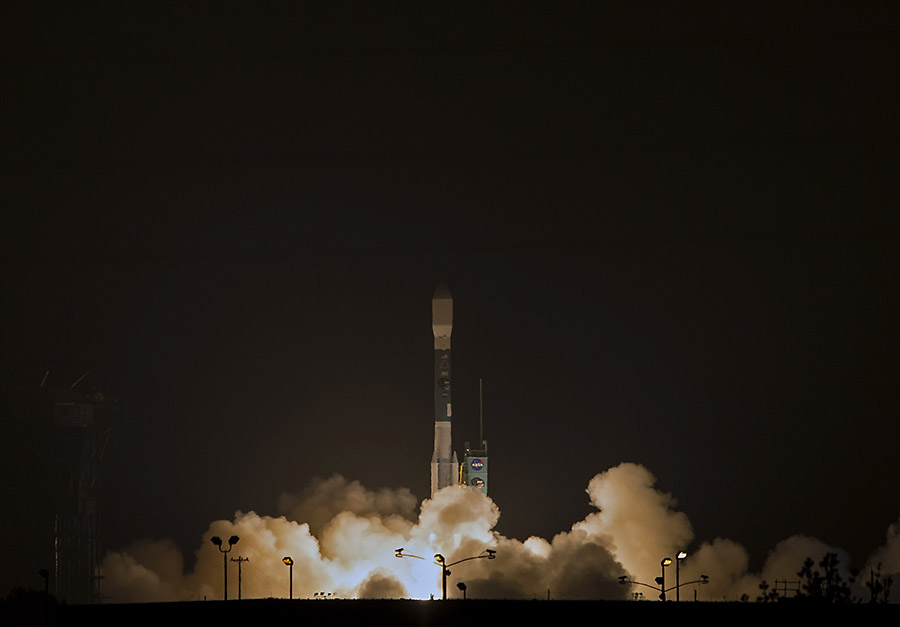A United Launch Alliance Delta II rocket with the Soil Moisture Active Passive (SMAP) observatory onboard launches from Space Launch Complex 2, Saturday, Jan. 31, 2015, Vandenberg Air Force Base, Calif. SMAP is NASA’s first Earth-observing satellite designed to collect global observations of surface soil moisture and its freeze/thaw state. SMAP will provide high resolution global measurements of soil moisture from space. The data will be used to enhance scientists’ understanding of the processes that link Earth’s water, energy, and carbon cycles. Photo Credit: (NASA/Bill Ingalls)
Home NASA’s Soil Moisture Active Passive (SMAP) observatory lifts off from Space Launch Complex 2 West at California’s Vandenberg Air Force Base, beginning a three-year mission to map Earth’s vital moisture hidden in the soils beneath our feet. (NASA/Bill Ingalls) NASA's Soil Moisture Active Passive (SMAP) observatory lifts off from Space Launch Complex 2 West at California's Vandenberg Air Force Base, beginning a three-year mission to map Earth's vital moisture hidden in the soils beneath our feet. (NASA/Bill Ingalls)


